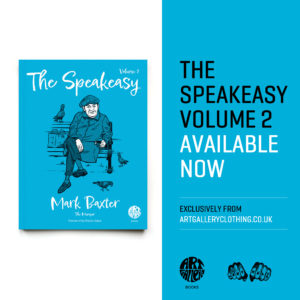
I’d hazard a guess that like a lot of people now reading this blog, my entry point to the work of American actor/director John Cassavetes, was through the 1950s NBC TV series ‘Johnny Staccato,’ which I saw repeated in the 1980s, I guess? Originally running from 1959 for just twenty-seven episodes, Cassavetes played Staccato, a private detective /jazz pianist, living and working in Greenwich Village in New York. I loved the ‘cool man, cool’ vibe conjured up on the show, complimented by a great theme tune from Elmer Bernstein .
Going through the start of my jazz phase as I was, the show became a major influence on my musical taste – the episodes often featured the likes of Shelley Manne, Barney Kessel and Red Norvo – as well as influencing key elements of my wardrobe. I even bought a set of bongos like the ones he had in his apartment! As well as starring in the show, Cassavetes also directed five episodes, which was a precursor for things to come.
He was born Ioánnis Nikólaos Kassavétis in New York in the December of 1929, son of actress Katherine, and Greek immigrant Nicholas. His early days were spent in Greece, before returning to Long Island in the US aged seven, being unable to speak English upon his return. Later, he studied English at Mohawk College, before being expelled later for poor grades. He then enrolled at the American Academy of Dramatic Arts, from where he graduated in 1950.
He married the actress Gena Rowlands in 1954, and began his acting career in the theatre, also picking up small parts on TV, and films like ‘The Night Holds Terror’ and ‘Edge of a City’ alongside Sidney Poitier.
He began teaching acting in 1956, with his own technique being a counterpoint to the prevalent ‘method’ system of the day. Cassavetes placed the attention on ‘expression of creative joy and exuberance, with emphasis put on the character’s creation of “masks” in the process.’
So, now you know.
He financed his directorial debut ‘Shadows’ in 1959, ‘a movie about people,’ initially with twenty thousand dollars, from listeners who heard him talk of the project on a local radio show. Say hello to crowd funding. He had been kicking this idea around for a couple of years, and this ‘independent’ approach meant he was able to get it made. It also meant, he was unable to get distribution in the US, but still picked up the critic’s award at the Venice film festival that year and found his name mentioned in the big Hollywood studios. For the soundtrack of ‘Shadows,’ he worked with famed jazz composer & bass player, Charles Mingus.
In the aftermath of the film, he signed a deal with Paramount in 1961, and went on to direct two films ‘Too Late Blues’ in the same year and ‘A Child is Waiting’ in 1963. He also continued to act, including appearing in the TV show, the Alfred Hitchcock Hour and ‘Voyage to the Bottom of the Sea.’
Finding himself somewhat stifled by the studio system, he broke away from his Paramount deal and he and Rowlands moved to California, with the intention of making further independent films away from the usual major studio set up. To finance these ‘indy’ films, he used his earning power in work like ‘The Dirty Dozen’ (1967), which earned him a best supporting actor Oscar nomination, and the disturbing ‘Rosemary’s Baby’ the following year.
His second self-financed film was ‘Faces,’ which took three years to complete. It appeared to be worth the wait, with it picking up three Academy Award nominations, best original screenplay, best supporting actress and best supporting actor. In light of the continuing distribution problem, Cassavetes set up his own company to handle that, namely ‘Faces International.’
Next in 1970, came ‘Husbands’ which he directed and starred in, alongside great friend Peter Falk and Ben Gazzara. That was quickly followed by ‘Minnie and Moskowitz’ in 1971, and then ‘A Woman Under the Influence’ in 1974, which earned Rowlands an academy nomination as best actress, and best director nomination for Cassavetes. ‘The Killing of a Chinese Bookie’ came next in 1976, once again starring Gazzara. Finishing off this impressive run of films, came ‘Opening Night’ from 1977, once again starring his wife Gena. She went on to pick up another nomination from the Academy in 1980 for her role in ‘Gloria,’ with John in the director’s chair.
Many of these films were shot and edited in his and Rowlands’ own Los Angeles home. Through the films, Cassavetes’s films tried to capture ‘small feelings’ he felt were repressed by the more established, ‘Hollywood’ style of film.
Cassavetes – ‘The drama of the scenes comes naturally from the real passage of time lived by the actors. The camera isn’t content to just follow the characters’ words and actions. I focus in on specific gestures and mannerisms. It’s from focusing on these little things—the moods, silences, pauses, or anxious moments—that the form arises. I try to put the actors in a position where they may make asses of themselves without feeling they’re revealing things that will eventually be used against them. I believe in improvising on the basis of the written word and not on undisciplined creativity. The hardest thing for a filmmaker, or a person like me, is to find people, who really want to do something. They’ve got to work on a project that’s theirs.’
Away from the world of film, Cassavetes loved music, from jazz to classical – ‘I like all music. It makes you feel like living. Silence is death.’
By 1987, Cassavetes was facing serious health issues related to his long-time excessive drinking, but he still managed to stage his play, ‘Woman of Mystery’ in the May/June of that year.
Sadly, John Cassavetes died in February 1989 aged just 59, suffering with cirrhosis of the liver. It was found he had left forty unproduced screenplays, as well as a novel and three plays for the theatre .
His children, Nick, Alexandra and Zoe followed their parents into the business, as directors in their own right
Upon his death the AllMovie website called him ‘an iconoclastic maverick,’ with the New Yorker suggesting he ‘may be the most influential American director of the last half century.’
Some legacy.
The Mumper of SE5
THE SPEAKEASY VOLUME 2 – AVAILABLE NOW
THE SPEAKEASY Volume Two by Mark Baxter (The Mumper)
Illustrations by Lewis Wharton
Foreword by Rhoda Dakar
Available to ORDER here
ART GALLERY CLOTHING
Spring / Summer 2022 Collection Available Now
JOIN US
Sign up to our newsletter and receive an exclusive promo code, latest news & Art Gallery Clothing offers.
Newsletter Signup




